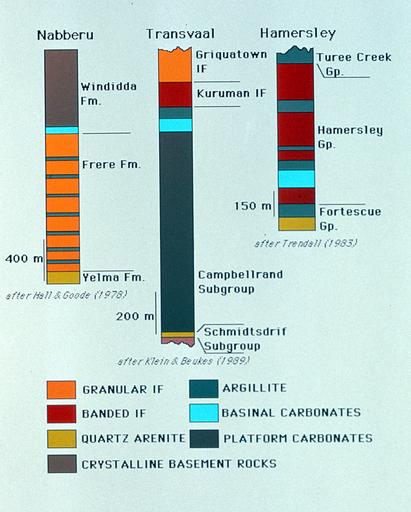Take a look at the diagram to understand their common functions. When we observe the intersection in this diagram depicting these two dating techniques, we can conclude that they both have two things in common: Provide an idea of the sequence in which events have occurred. Determine the age of fossils, rocks, or ancient monuments. Although absolute dating methods determine the accurate age compared to the relative methods, both are good in their own ways.
Relative Dating Techniques Explained.
Geologic Age Dating Explained
How are Waterfalls Formed. Types of Metamorphic Rocks.

How are Rivers Formed? What Tools do Archaeologists Use. Why is Archaeology Important. Deepest Part of the Ocean. Interesting Facts About Hurricanes. How do Tornadoes Form. Who Invented the Battery. Lab Safety Rules for Kids.
Navigation menu
Particular isotopes are suitable for different applications due to the types of atoms present in the mineral or other material and its approximate age. For example, techniques based on isotopes with half lives in the thousands of years, such as carbon, cannot be used to date materials that have ages on the order of billions of years, as the detectable amounts of the radioactive atoms and their decayed daughter isotopes will be too small to measure within the uncertainty of the instruments.
One of the most widely used and well-known absolute dating techniques is carbon or radiocarbon dating, which is used to date organic remains. This is a radiometric technique since it is based on radioactive decay. Carbon moves up the food chain as animals eat plants and as predators eat other animals. With death, the uptake of carbon stops. It takes 5, years for half the carbon to change to nitrogen; this is the half-life of carbon After another 5, years only one-quarter of the original carbon will remain. After yet another 5, years only one-eighth will be left.
By measuring the carbon in organic material , scientists can determine the date of death of the organic matter in an artifact or ecofact. The relatively short half-life of carbon, 5, years, makes dating reliable only up to about 50, years. The technique often cannot pinpoint the date of an archeological site better than historic records, but is highly effective for precise dates when calibrated with other dating techniques such as tree-ring dating.
An additional problem with carbon dates from archeological sites is known as the "old wood" problem. It is possible, particularly in dry, desert climates, for organic materials such as from dead trees to remain in their natural state for hundreds of years before people use them as firewood or building materials, after which they become part of the archaeological record. Thus dating that particular tree does not necessarily indicate when the fire burned or the structure was built.
For this reason, many archaeologists prefer to use samples from short-lived plants for radiocarbon dating. The development of accelerator mass spectrometry AMS dating, which allows a date to be obtained from a very small sample, has been very useful in this regard. Other radiometric dating techniques are available for earlier periods.
- How does absolute dating differ from relative dating? | Socratic!
- the best singles dating sites.
- Relative Dating vs. Absolute Dating: What's the Difference?;
- examples of things to write on a dating profile?
- online dating tips over 40.
- .
One of the most widely used is potassium—argon dating K—Ar dating. Potassium is a radioactive isotope of potassium that decays into argon The half-life of potassium is 1. Potassium is common in rocks and minerals, allowing many samples of geochronological or archeological interest to be dated. Argon , a noble gas, is not commonly incorporated into such samples except when produced in situ through radioactive decay.
The date measured reveals the last time that the object was heated past the closure temperature at which the trapped argon can escape the lattice. K—Ar dating was used to calibrate the geomagnetic polarity time scale. Thermoluminescence testing also dates items to the last time they were heated. This technique is based on the principle that all objects absorb radiation from the environment. This process frees electrons within minerals that remain caught within the item. Heating an item to degrees Celsius or higher releases the trapped electrons , producing light.
This is called the Rule of Superposition. This rule is common sense, but it serves as a powerful reference point.
Absolute dating - Wikipedia
Geologists draw on it and other basic principles http: Relative age dating also means paying attention to crosscutting relationships. Say for example that a volcanic dike, or a fault, cuts across several sedimentary layers, or maybe through another volcanic rock type. Pretty obvious that the dike came after the rocks it cuts through, right? With absolute age dating, you get a real age in actual years.
- safe dating hotlines.
- You May Also Like?
- tinder hook up strategy.
- .
- hook up with females.
Based on the Rule of Superposition, certain organisms clearly lived before others, during certain geologic times. The narrower a range of time that an animal lived, the better it is as an index of a specific time. No bones about it, fossils are important age markers. But the most accurate forms of absolute age dating are radiometric methods.
This method works because some unstable radioactive isotopes of some elements decay at a known rate into daughter products. This rate of decay is called a half-life. Half-life simply means the amount of time it takes for half of a remaining particular isotope to decay to a daughter product. Good discussion from the US Geological Survey: So geochronolgists just measure the ratio of the remaining parent atom to the amount of daughter and voila, they know how long the molecule has been hanging out decaying.
There are a couple catches, of course.
